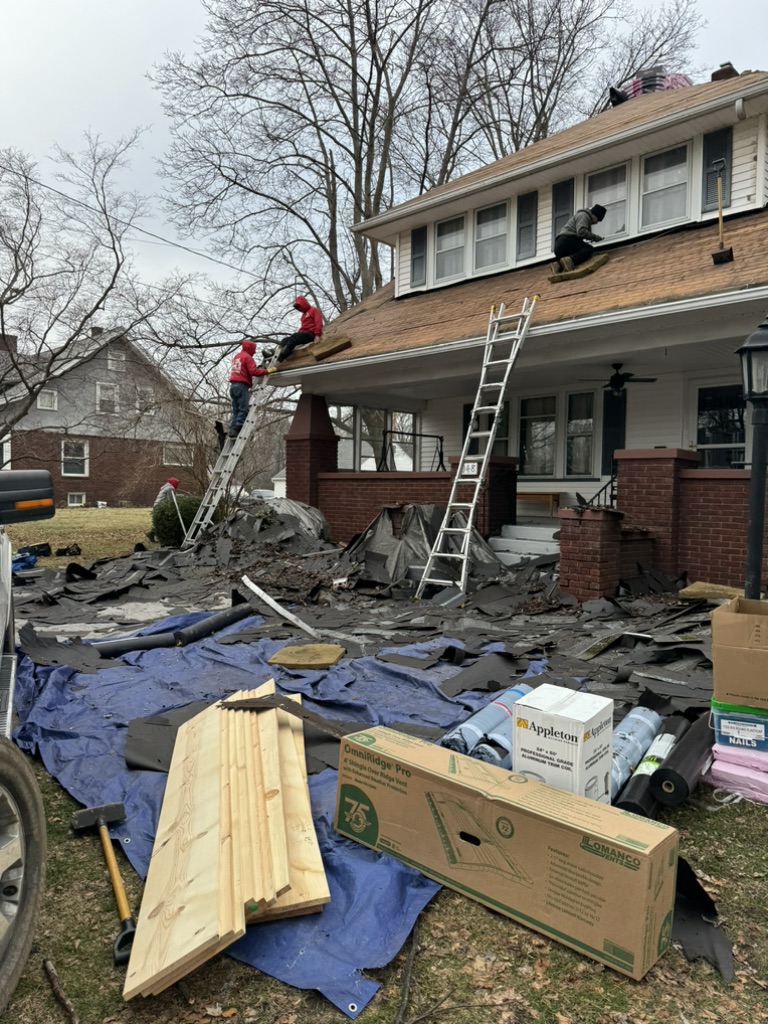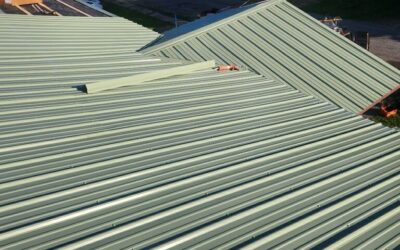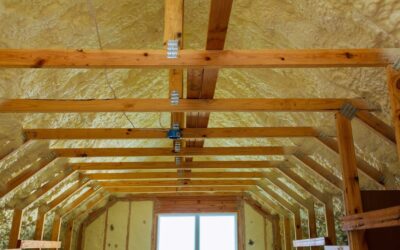Insulation is a critical component of buildings today, playing an essential role in maintaining energy efficiency, comfort, and structural integrity. Over the centuries, it has evolved into a sophisticated and scientifically engineered product that enhances the sustainability and performance of our homes and commercial buildings. However, the concept of insulation and its development goes back far beyond modern-day materials and technologies. In this comprehensive blog, we’ll explore the fascinating history of insulation, tracing its origins, breakthroughs, and innovations to understand how insulation has become a cornerstone of modern architecture and construction.
Early Beginnings: Primitive Insulation in Ancient Times
Insulation, in its most basic form, has existed for thousands of years. Ancient humans recognized the need to protect themselves from the elements, particularly from extreme cold or heat. Early forms of insulation were rudimentary, made from locally available materials such as animal skins, straw, and mud. These primitive methods aimed to regulate the temperature of living spaces and provide some degree of protection against harsh weather conditions.
Ancient Egypt: Straw and Mud
The ancient Egyptians are believed to be some of the earliest builders to use insulation techniques. They built their homes using thick mud-brick walls, which provided natural insulation from the desert heat. The coolness of the mud helped maintain comfortable indoor temperatures during the scorching summer months. In addition to mud-brick, Egyptians also used straw and reed mats for insulation. The mats were placed on windows and doorways to keep out the intense heat and dust.
The Roman Empire: Glass and Marble Insulation
The Romans, known for their advancements in architecture and engineering, were among the first to experiment with glass in building designs. While they did not use insulation in the modern sense, they recognized the importance of controlling indoor climates. Romans used glass windows for the first time in the 1st century CE, which helped reduce drafts and insulate their homes from the cold. Marble, which has good thermal mass properties, was often used in the floors and walls of Roman villas, helping to absorb and regulate temperature fluctuations.
Middle Ages: Natural Insulation Methods
During the Middle Ages, construction practices continued to evolve. Insulation in homes was often achieved through a combination of thick walls, thatched roofs, and natural materials such as straw, wood, and clay.
Thick Stone Walls and Thatched Roofs
In medieval Europe, castles and homes were typically built with thick stone walls that acted as natural insulators. The mass of the stone helped keep buildings warm in the winter and cool in the summer by absorbing and slowly releasing heat. In rural areas, houses were often constructed with thatched roofs made from straw, which helped provide some degree of insulation. The layers of straw trapped air, keeping the home warmer in winter and cooler in summer.
Tiled Floors and Insulating Materials
During this time, clay tiles were used for flooring in many European homes. The thermal mass of the tiles helped to maintain an even temperature inside. The use of wooden beams and straw for insulation in roof spaces was also common. However, the understanding of insulation as a science was still primitive, and the materials used were mainly driven by practicality and availability rather than advanced design.
The Industrial Revolution: The Birth of Modern Insulation
The Industrial Revolution, which began in the late 18th century, brought about significant changes in construction techniques and building materials. As cities grew and industrialization expanded, the need for more efficient insulation became increasingly important. This period marked the beginning of modern insulation practices.
The Development of Glass Wool
In the 19th century, the invention of glass wool—an early form of fiberglass—marked a milestone in the development of insulation materials. Glass wool was first invented by a Scottish scientist named George Rayner in 1861. It was made by melting silica sand and drawing the molten glass into fine fibers. These fibers were then used to create insulating mats. The key advantage of glass wool was its ability to trap air, which provided excellent thermal insulation properties.
By the late 19th and early 20th centuries, glass wool and other fiber-based materials began to be used in the construction of buildings, especially in commercial and industrial structures. These materials helped improve thermal performance and reduce energy consumption in increasingly urbanized environments.
The Rise of Mineral Wool
Another key development during this period was the invention of mineral wool (also known as rock wool or slag wool). This material was made by heating rocks or slag (a byproduct of metal manufacturing) to extremely high temperatures and then spinning the molten material into fibers. Mineral wool became popular as an insulating material for industrial applications due to its excellent heat resistance and fireproofing properties.
The 20th Century: Insulation Becomes a Standard in Construction
As the 20th century progressed, the use of insulation in residential and commercial buildings became more widespread. Technological advancements, the rise of energy-conscious building practices, and the growing availability of synthetic insulation materials changed the way homes and buildings were constructed.
Introduction of Fiberglass Insulation
Fiberglass insulation, which became widely available in the mid-20th century, revolutionized the insulation industry. Unlike earlier fiber-based materials like glass wool, fiberglass was made by spinning molten glass into tiny fibers, which were then formed into batts, rolls, or loose-fill insulation. Fiberglass became the go-to insulation material for homes, thanks to its high R-value (a measure of thermal resistance), ease of installation, and affordability.
Fiberglass insulation was especially important during the post-World War II housing boom, as it helped make homes more energy-efficient and comfortable. It was used in attics, walls, and floors, significantly improving indoor climate control and reducing heating and cooling costs.
The Development of Expanded Polystyrene (EPS) and Polyurethane Insulation
In the mid-20th century, other synthetic materials like expanded polystyrene (EPS) and polyurethane foam began to be used for insulation. EPS, commonly known as Styrofoam, became popular for insulating walls, floors, and roofs due to its lightweight, water-resistant properties. Polyurethane foam, which can be sprayed into place, was widely used in both residential and commercial construction for its superior thermal resistance and ability to create an airtight seal.
These innovations led to more effective and energy-efficient insulation solutions, especially in colder climates where insulation played a critical role in reducing heating costs.
The Energy Crisis of the 1970s
The energy crisis of the 1970s marked a turning point in the insulation industry. With rising fuel prices and growing concerns about energy consumption, homeowners and builders became increasingly focused on improving the energy efficiency of buildings. This led to the widespread adoption of improved insulation materials and techniques. The government also introduced new building codes that required homes to meet specific energy efficiency standards, including the use of proper insulation in walls, attics, and floors.
Late 20th Century to Present: Innovations in Insulation Materials
The last few decades have seen continued advancements in insulation technology, with a focus on sustainability, energy efficiency, and environmentally friendly materials. The development of new insulation products has improved the performance, installation process, and environmental impact of insulation.
Spray Foam Insulation
One of the most significant innovations in the last few decades is the development of spray foam insulation. Spray foam insulation is a versatile material that is applied directly to walls, attics, and roofs. It expands as it is sprayed, filling gaps and cracks to create an airtight seal that prevents heat loss and moisture buildup. Spray foam insulation is highly effective for both thermal insulation and soundproofing and is often used in modern energy-efficient homes.
There are two types of spray foam insulation: open-cell and closed-cell. Open-cell spray foam is less dense and more flexible, making it ideal for interior applications, while closed-cell spray foam is denser and more rigid, providing a higher R-value and better moisture resistance, making it suitable for exterior applications.
Reflective and Radiant Barrier Insulation
Another recent development in insulation technology is reflective or radiant barrier insulation. This type of insulation is designed to reflect heat away from a building in hot climates and keep heat inside during the winter. Reflective barriers are typically made from a layer of aluminum foil that is installed in attics or walls. These materials are particularly effective in warm climates where cooling costs are high.
Green Insulation Materials
As sustainability has become a more pressing issue in modern construction, green insulation materials have gained popularity. Many companies now offer environmentally friendly insulation options made from recycled or renewable resources. Some examples include:
- Cellulose Insulation: Made from recycled newspaper, cellulose insulation is a sustainable choice that provides excellent thermal and acoustic insulation.
- Cotton Insulation: Cotton insulation, often made from recycled denim, is another eco-friendly option that provides good insulation without harmful chemicals.
- Sheep’s Wool Insulation: Sheep’s wool is a natural insulator that is renewable and biodegradable. It is also highly effective at regulating indoor humidity and temperature.
The Future of Insulation
As we look toward the future, the insulation industry continues to evolve. There is a growing focus on creating materials that not only provide superior insulation but also help reduce environmental impact. Innovations in nanotechnology, for example, may lead to even more effective insulation materials that are thinner, lighter, and more efficient.
With a growing emphasis on sustainability, the use of recycled materials, and the development of new, high-performance insulation products, the future of insulation looks bright. These advancements will not only improve the energy efficiency of buildings but also contribute to the global effort to reduce carbon emissions and combat climate change.
Conclusion
From the primitive insulation methods of ancient civilizations to the high-tech, energy-efficient materials of today, insulation has come a long way. The history of insulation is a testament to human ingenuity and the drive to create comfortable, energy-efficient living spaces. As technology continues to advance, we can expect even more breakthroughs in insulation materials and techniques, helping to create more sustainable and efficient homes and buildings. Whether you’re building a new home or upgrading an existing one, understanding the history of insulation can give you a deeper appreciation for the role it plays in modern construction and its impact on our daily lives.
 (440) 307-2060
(440) 307-2060





